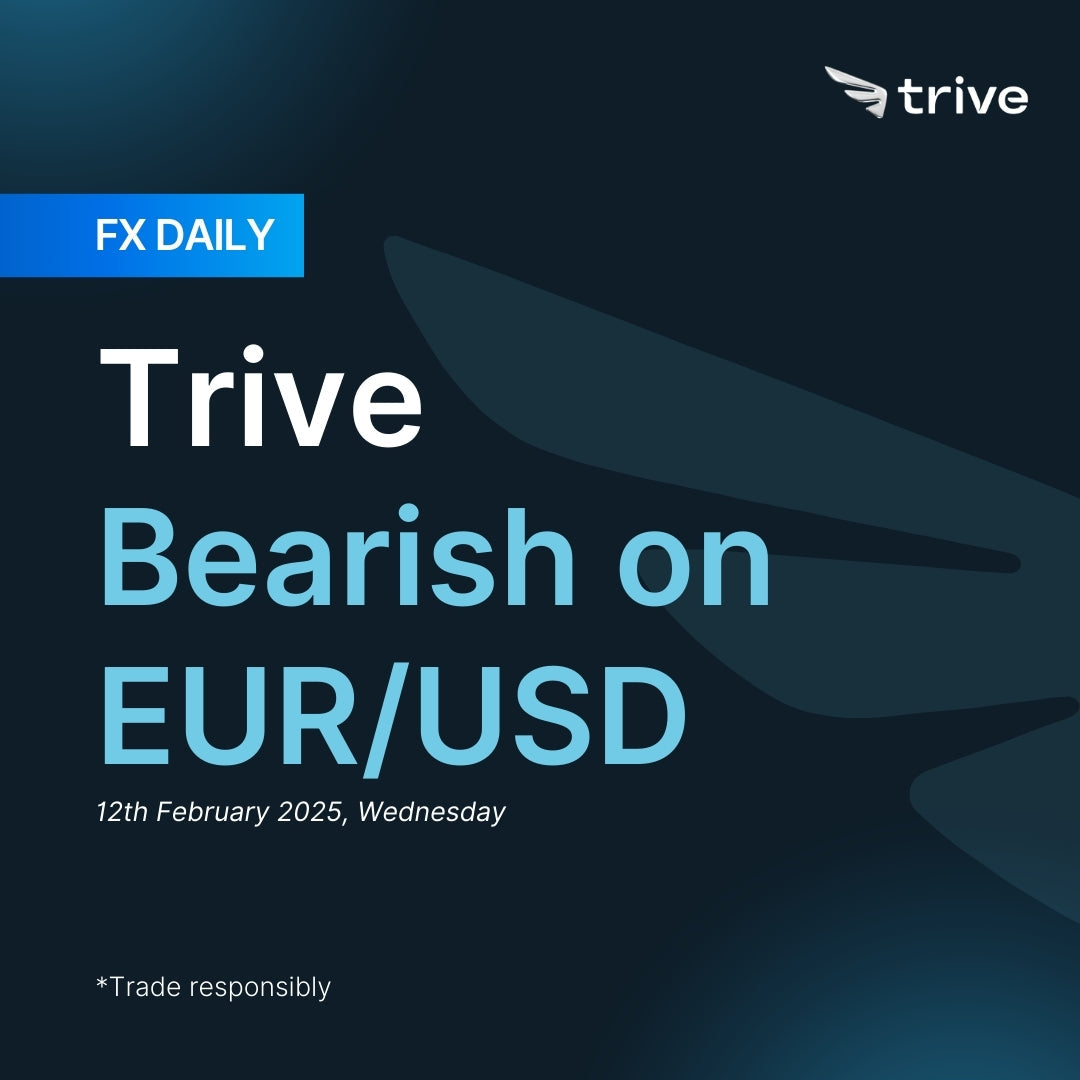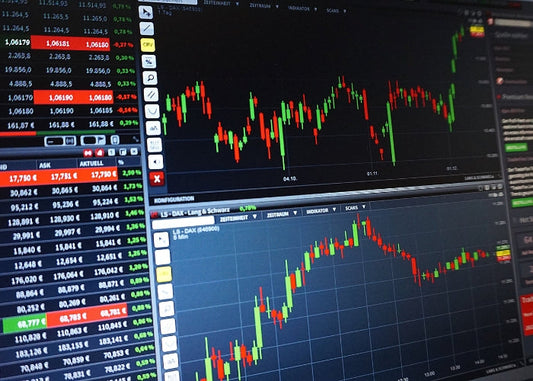FX Daily: Trive Bearish on EUR/USD

The threat of tariffs remains a key pressure on the euro. While a potential ceasefire deal between Russia and Ukraine could provide a boost to the currency, tariffs pose a significant long-term risk. Meanwhile, the U.S. economy remains strong, as reflected in the January NFP report, suggesting the Fed is in no rush to cut rates—further supporting the dollar.
EUR: Tariffs coming
The EUR’s baseline outlook remains bearish, primarily due to weak economic growth, as reflected in last week’s manufacturing PMI, which confirmed continued economic contraction and heightened concerns over the region’s growth recovery. Additionally, last two week’s central bank meetings underscored the policy divergence between the dovish ECB and the more neutral Fed. Markets continue to anticipate further rate cuts from the ECB, while the Fed is expected to hold rates steady, leading to a widening EUR-USD rate spread, which remains a key fundamental driver of EUR/USD. Currently, external risks outweigh domestic factors, with downside risks increasing following Trump’s statement that tariffs on the European Union will "definitely happen." Given that Eurozone exports to the U.S. account for nearly 3.5% of GDP, the widespread implementation of tariffs would further weaken an already fragile Eurozone economy. Additionally, the ECB’s January meeting emphasized downside risks to growth, citing ongoing economic headwinds, which reinforced expectations of further monetary easing. Should U.S. tariffs be imposed, the ECB may be forced to reintroduce accommodative monetary policy, with rates markets likely to price in such a scenario.
On Friday, the ECB released a research paper examining the neutral interest rate in the eurozone. While the ECB’s direct reliance on this concept remains uncertain, the findings suggest there is still ample room for further rate cuts. The paper estimates the neutral rate to be between 1.75% and 3%, with the most recent data narrowing this range to 1.75%-2.25%. However, in recent days, the ECB has downplayed the relevance of the neutral rate as a guiding metric for policy decisions. Ultimately, regardless of this latest estimate, markets continue to price in rate cuts to at least 2% by this summer.
While the overall outlook remains bearish, near-term risks persist. Recent reports suggest that the U.S. will unveil a peace plan at this week's Munich Security Conference, alongside indications that both Russian and Ukraine’ leaders are softening their stance toward potential negotiations. These developments could provide temporary support to EUR/USD and the single currency. However, even in the case of positive catalysts from the negotiations, markets remain skeptical that they will offset broader Eurozone economic challenges or significantly boost growth prospects. This is because tariffs remain the primary threat to the Eurozone, and any short-term gains in the EUR could trigger sell-on-rally opportunities. Furthermore, a key date to watch is April 1, when the U.S. Commerce Department and Trade Representative are set to conclude a comprehensive review of the country’s trade deficits. In theory, substantial tariffs may not be implemented until after April, once formal recommendations are made, adding another layer of uncertainty for the EUR.
Looking ahead, the EUR’s economic calendar remains light, with no major domestic catalysts. Market participants will closely monitor headlines related to Trump’s trade policies, particularly on tariffs targeting the EU, as well as geopolitical developments between Russia and Ukraine. Barring any significant surprises, the EUR is expected to remain bearish, providing sell-on-rally opportunities.
USD: Tariffs man
The baseline outlook for the USD remains bullish, driven by trade policy developments under President Trump, the Federal Reserve’s stance, and the resilience of the U.S. economy. Firstly, while Trump has delayed tariffs on Canada and Mexico for 30 days, providing temporary relief to markets, and see the tariffs are being used as a negotiating tactic rather than a fundamental shift in trade policy. However, uncertainty remains high and recent USD movements suggest that markets may be overly optimistic about Trump’s approach to tariffs. A key date to monitor is April 1, when the U.S. Commerce Department and Trade Representative will conclude a comprehensive review of trade deficits. Significant tariffs are unlikely to be implemented before then, as formal recommendations must first be made. Additionally, Trump has informed Republican lawmakers of his intention to impose reciprocal tariffs, with an official announcement expected early this week. Given these developments, tariffs appear inevitable, adding another layer of uncertainty to financial markets and reinforcing the USD’s safe-haven appeal.
Secondly, the Federal Reserve remains in no rush to cut rates, as echoed in recent speeches by Fed officials. Policymakers have acknowledged policy uncertainty, with Collins highlighting that tariffs could impact inflation, while Bostic suggested that the Fed might either look through tariff-induced price effects or respond if inflation expectations shift. Overall, Fed members appear aligned in their outlook—monetary policy is now significantly less restrictive than before, and given the economy’s strength, there is no urgency to adjust rates in the near term, thus further support the USD.
Thirdly, the U.S. economy remains strong and resilient, as reflected in the January Non-Farm Payrolls (NFP) report. While January NFP came in at 143K, below the 175K consensus, upward revisions of 100K for the previous two months offset the miss. The unemployment rate declined to 4.0% from 4.1%, and average hourly earnings (AHE) rose 0.5% m/m, signaling robust wage growth. Furthermore, benchmark revisions were not as severe as initially projected. The downward revision for the 12 months ending March 2024 was adjusted from an expected 818K to 598K, with subsequent data revisions painting a stronger labor market picture. Importantly, October, November, and December job figures were revised higher, suggesting a stronger employment trend at the end of 2024 than previously thought. Taken together, these factors support the Fed’s stance of holding rates steady for now, with no imminent need to cut.
Looking ahead, market attention will focus on U.S. economic data, particularly the January CPI report, as well as further developments on Trump's tariff policies. The market expects core CPI to come in at 0.3% m/m, which would reinforce the case for the Fed to remain on hold for several months. For the Fed to consider a rate cut as early as March or H1 2025, inflation would need to track closer to 0.17% m/m, aligning with a 2% y/y inflation target. In summary, barring any surprises from January CPI or a significant shift in Trump’s tariff policies, such as the reciprocal tariffs under discussion, the USD is expected to remain supported in the near term.

Disclaimer
This material is provided for informational purposes only and does not constitute financial, investment, or other advice. The opinions expressed in this material are those of the author and do not necessarily reflect the views of Trive International. No opinion contained in this material constitutes a recommendation by Trive International or its author regarding any particular investment, transaction, or investment strategy. This material should not be relied upon in making any investment decision.
The information provided does not consider the individual investment objectives, financial situation, or needs of any specific investor. Investors should seek independent financial advice tailored to their individual circumstances before making any investment decisions. Trive International shall not be liable for any loss, damage, or injury arising directly or indirectly from the use of this information or from any action or decision taken as a result of using this material.
Trive International may or may not have a financial interest in the companies or securities mentioned. The value of investments may fluctuate, and investors may not get back the amount they originally invested. Past performance is not indicative of future results.
For more information about Trive International, please visit http://trive.com/int
Additional Information
Investing involves risk, including the potential loss of principal. Diversification and asset allocation strategies do not ensure a profit or guarantee against loss. The content in this material is subject to change without notice and may become outdated or inaccurate over time. Trive International does not undertake any obligation to update the information in this material.
By accessing this material, you acknowledge and agree to the terms of this disclaimer. If you do not agree with these terms, please refrain from using this information.
No comments
Home
Trive
TriveHub





0 comments